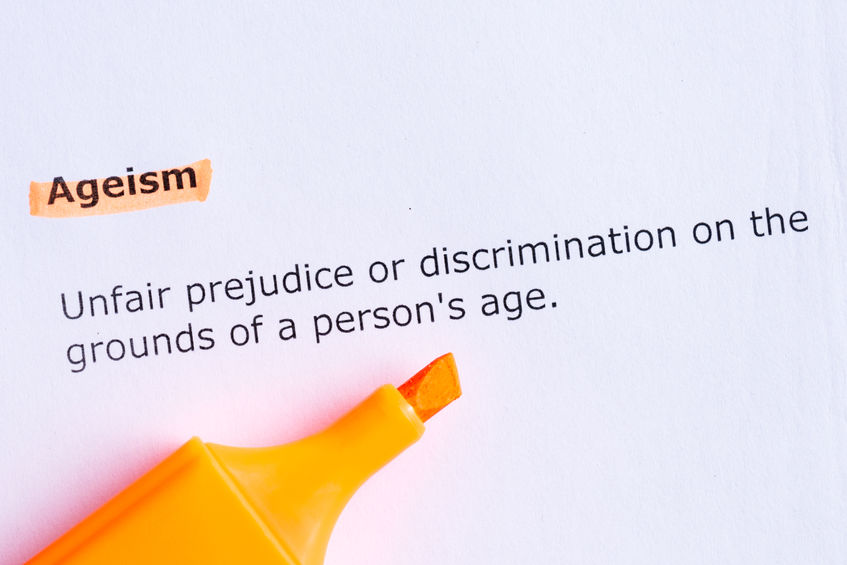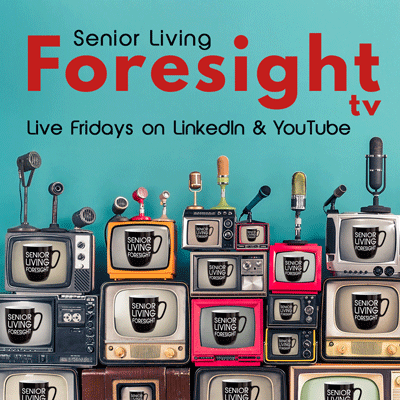The 37th Annual Conference of the California Council on Gerontology and Geriatrics offers vision and insights.
By Jack Cumming
On Friday, April 28th, I attended the 37th Annual Conference of the California Council on Gerontology and Geriatrics (CCGG). I wanted to pronounce the initials as “Siege” to make it less of a mouthful, but trying that just brought bewildered faces. CCGG (pronounced See:See…Gee…Gee) is primarily a consortium of educators preparing people for careers in the analysis and support of aging people. Their self-description is that CCGG “seeks to promote the quality of life of California’s diverse aging population by informing and integrating educational programs, workforce development, and public policy initiatives.” Now that takes some analysis itself to parse.
Hidden Ageism
I’ve written before about ageism. LeadingAge national has made identifying and eliminating ageism a signature undertaking. The darkest, most insidious form of ageism is, as you might imagine, any tendency to stereotype and respond to older people as a group instead of as individual human beings who have lived through a certain number of birthdays. Admittedly, though, it’s hard to be a gerontologist and not to generalize about aging.
I saw one textbook on display that costs $210 in hardback to buy on Amazon (an exorbitant price even in these inflated days). The textbook views services to the elderly through a collective lens. Is that “ageism”? It’s certainly well-intentioned as it verges on what some might think of as unperceived ageism.
The Missing Elders
What was missing in Long Beach, was the same as what was missing from the ageism panel at the LeadingAge PEAK conference a month and a half earlier. There was one “old” person on the panel but that woman was fit and hale and clearly little more than 70-years-old in a time when the group of centenarians is the fastest growing demographic segment in America. She was the picture of what people not yet afflicted by age want to believe about aging. For them, old age is a time of liberation, freedom from the responsibilities and accountabilities of workaday living.
Growth with Opportunity
LeadingAge wants to change the national perception to view advanced age as “a third stage of growth filled with opportunity,” and that it is. Still, it’s also a time of loss and challenge, grief and adaptation. The takeaway from the day at CCGG was that it is very difficult for academic observers to balance what’s positive with the practical. That’s not surprising.
Serving the Elderly is a Noble Calling
Finding that balance is difficult for all of us who concern ourselves with aging. Addressing the challenges of aging with intelligence and empowerment is a noble undertaking. We benefit society as a whole when we find the sweet spot between veneration and paternalism.
Laura Trejo, Los Angeles Department of Aging
For me, the highlight of the day was to get reacquainted with Laura Trejo, the General Manager of the Los Angeles Department of Aging. If you know Laura, you know her to be one of the most intelligent, astute, and effective thinkers today on aging.
I got to know her more than ten years ago when I was a member of the Advisory Councils for both the City and County of Los Angeles’s Area Agencies on Aging. Yes, Los Angeles has two AAA organizations, reflecting former Mayor Tom Bradley’s belief that Los Angeles City needed its own AAA.
Ms. Trejo works closely with her County counterpart, Cynthia Banks, to gain the attention of political leaders on the importance of making Los Angeles “age friendly.” The minute she said that, the phrase “age friendly” resonated with me as a positive restatement of the LeadingAge goal of an “America freed from ageism.”
A Multi-Year Process
She outlined a multi-year process by which the City hopes to become that age-friendly mecca. Her talk was exhilarating and uplifting. It will be difficult to get there, but hope spread through the room as she described the vision, the process, and the potentialities.
Her vision opened with an embrace of the diversity that is characteristic of Los Angeles’s aging population. There are 11 core languages, each with its own distinct cultural grouping, providing a platform for the creation of affinity service delivery models. That’s just the beginning.
Rags to Riches
You can imagine the wide range of socio-economic circumstances in a city in which can be found the very poor – some living in cardboard street homes – and the very rich . . . think of Hollywood moguls, plus all levels in between. Geography, too, has an impact; how many counties have both an island like Catalina and remote areas with more animals than people? In the complexity of the Los Angeles area’s housing and services challenges, it provides a laboratory for ways to address our national challenges: rural vs urban, poor vs. rich, anglophone vs. multiphone, etc.
Core Needs
The hope is to provide purposeful aging for as many Angelinos as possible. So far, the outreach into the larger community has revealed nine core needs plus an added starter, namely emergency preparedness and resilience. Los Angeles is in the process of fleshing out the gap between the vision and what’s now available.
Accessibility has surfaced as a priority need along with a need for dementia friendly environments for those who are stricken. A widely attended Older Adults Summit was a particularly useful instrument for refining the vision.
The Next Generation
There were many gerontology students in the audience, so Ms. Trejo closed with advice for them . . . which is also good advice for people of all ages. She suggested that they start their careers with a top 10 list of what they would want for aging. Of course, at age 20 or 21, or even at age 25 or 26, it’s hard to imagine the subjective experience of aging with enough clarity to have a top 10 list, but these are students of gerontology and she wanted them to start out with purpose.
10 Steps to Achieve 10 Goals
She then spoke of her own top 10 list, and it soon became evident that she had another top 10 table of the steps that it would take to achieve the top 10 goals. She conceded that she had yet to achieve all her top 10 goals but she has accomplished more than she might have achieved without that simple sense of direction.
The General Program
The rest of the program fell in line with what one might expect. There were professors presenting their research results. There were students learning research methodologies. There was a display of posters with research findings and student researchers ready to respond to questions on their posters.
Need for Purpose
My favorites documented the need for purpose as a life-sustaining element. One was titled “Perceiving oneself as a giver vs. receiver elicits unique emotional state blends,” and another titled “Giving advice increases older adults’ subjective well-being.” While these two examinations of the need to matter involve studies of older people, that need is basic to humans. It’s not surprising that older people have the same needs as do people of all ages; they still have their humanity.
The Village Movement
In light of this discernment about wanting to matter, the finding of one professor in a panel on the Village Movement is not surprising. The professor has made the Village Movement the focus of her research interest. In the course of her research, she has found that the “villages” are more likely to prosper and endure when they are initiated at the grassroots level by the members themselves.
Provider ventures into Village enterprise creation have had less success. As one provider executive, himself a baby boomer, put it while speaking of his generation. “We want choice and control and won’t settle for less.” That sounds like empowerment for any generation.





